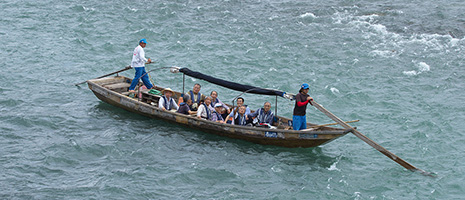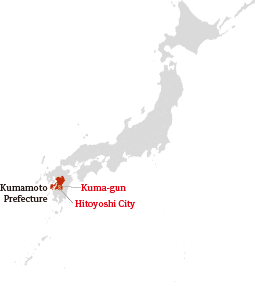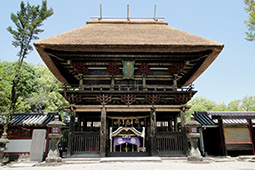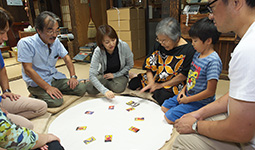Home > Highlighting JAPAN > Highlighting Japan October 2016 > Japan Heritage
Highlighting JAPAN


- PREVIOUS
- NEXT
Thank the Lords
The cultural legacy of the Sagara clan lives on in Hitoyoshi Kuma, Kumamoto Prefecture.
In the Warring States period from the middle of the fifteenth century to the turn of the seventeenth century the daimyo lords of Japan were engaged in almost constant bloody conflict as they sought to protect or expand their territories. Many lost their lives and land in these tumultuous times. Even when peace came down with Japan’s unification in the Edo period (1603–1867), many would lose their titles or have their land confiscated by order of the new Tokugawa shogunate. Few clans survived this turmoil, the Sagara clan of Kyushu.
The Sagara clan hailed from the manor of the same name in present-day Shizuoka Prefecture but moved to Hitoyoshi Kuma (now Hitoyoshi City and Kuma-gun) in what is now Kumamoto Prefecture by order of the Kamakura shogunate at the end of the twelfth century. In its new territory, the Sagara clan made an effort to preserve the culture that had existed there since ancient times in order to gain the respect of the people.
“Lords tended to reject or destroy the history and culture of their new territories, but the Sagara clan was different,” says Yoshifumi Wada, a member of the Hitoyoshi City Board of Education. “Because the lords and the people protected the culture together, a large number of old shrines and temples still remain in Hitoyoshi Kuma and neighboring Kuma, even today.”
Of the nineteen shrine and temple buildings in Kumamoto Prefecture designated as important cultural properties, sixteen are located in Hitoyoshi Kuma. The most significant among these buildings is the Aoi Aso Shrine, which was founded in 806. Local people still visit the shrine to worship the god who protects the area, and every October participate in the shrine’s Okunchi Festival, which was first held some 1,200 years ago.
Aoi Aso Shrine is notable for its large, high-pitched thatched roof, which is a feature in fact of numerous historical buildings in the area. One such is the Shorenji Amidado Temple, which was founded in 1295. The statue of the Amidanyorai held within is designated as a national important cultural property.
“The influence of the Sagara clan can be seen not only in the surviving buildings and statues, but also in people’s lifestyles,” says Wada.
One example is Kuma shochu, a distilled liquor made of rice which has its origins in the sixteenth century but which began to be drunk more widely when the Sagara clan permitted brewing using rice, a precious commodity in the Edo period. A related legacy is a game played using the fists called Kuma-ken, which is thought to be the root of the rock-paper-scissors game, which was first played at Kuma shochu drinking parties.
Similarly, Unsun Karuta is a card game that is still played only in Hitoyoshi Kuma. It is believed that Unsun Karuta originated from a card game that was introduced to Japan from Portugal in the late sixteenth century and became popular throughout Japan in the Edo period. In the middle of the Edo period, however, the Tokugawa shogunate prohibited the game due to its gambling elements. It is thought that the game only survived until today because the Sagara clan respected it as a form of popular entertainment.
The Kuma-gawa river which runs through Hitoyoshi Kuma had burst its banks repeatedly over the centuries. The Sagara clan therefore carried out river improvement and utilization projects and transformed Hitoyoshi into a rice-producing area. The clan also used the river to transport rice and timber. This tradition of local people using the river survives today with rafting being a popular tourist attraction.
“The Kuma-gawa river is the mother river of Hitoyoshi Kuma,” says Wada. “The culture of Hitoyoshi Kuma has been developed jointly by the Sagara clan, local people and nature.”
- PREVIOUS
- NEXT
© 2009 Cabinet Office, Government of Japan









